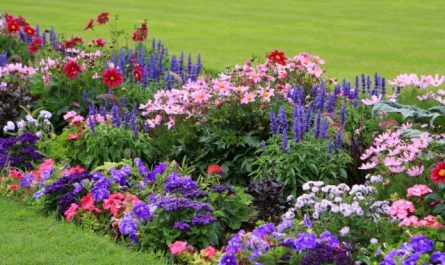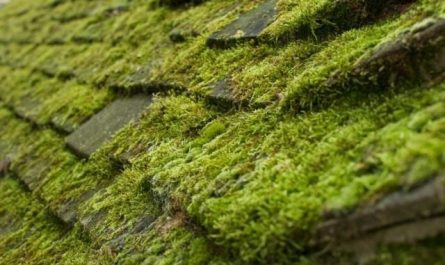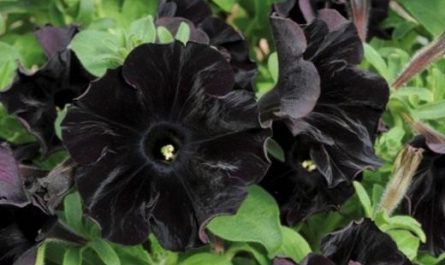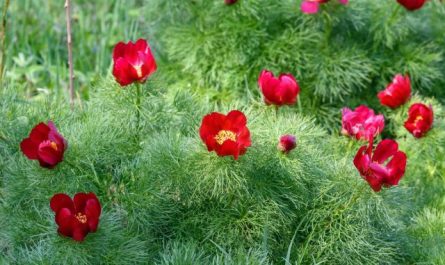One of the youngest styles of landscape design, born at the end of the century before last, is the cottage style. This is such a “young” direction of garden art that sometimes its boundaries seem not yet quite defined. Although cottage gardens are one of the simplest in structure, organization principle, and landscaping. In this article, we will consider the basic principles of creating a cottage garden and tell you why a cottage garden is not a landscape or country garden.

Contents:
What are the signs that indicate a cottage style garden?
The cottage style in landscape design is a trend that was born and “pushed off” from architecture, and not from art and aesthetics.
This is a very practical style that solves very specific problems, which can safely be called highly specialized. If French, English, Mediterranean, Scandinavian gardens in the Art Nouveau or high-tech style are laid out according to one’s taste, sometimes not tied to buildings at all or somehow compensating for the lack of interesting elements, then the cottage style is used exclusively for the design of areas around cottages.
The cottage garden is a formal and modern landscape style with an impeccable appearance of modest but carefully thought-out plantings that look attractive regardless of the season and the purpose of the plants.
A large open space surrounded by mixed borders and arrays, decorative vegetable gardens and individual vertical accents form the basis of this style – laconic, economical both in terms of costs and required maintenance.
The cottage style is often called “glamorous” or “glossy” today: a garden designed in this style really does seem to have come straight from the pages of advertising brochures or periodicals.
In fact, the cottage style is a modern rethinking and idealized version of a garden with a vegetable garden near a small house. In it, even the beds are given a modern neatness, focusing on both practicality and aesthetics.

Cottage – not a landscape garden and not country
There is a lot of confusion in the interpretation of the cottage style. The spread of individual landscape design styles in the design of small gardens near modern cottages has led to the cottage style itself being called English, Dutch, or simply a landscape garden. But they are independent and self-sufficient directions of landscape design, and, despite some common features, have nothing to do with a genuine cottage garden.
Most often, the cottage style is confused with a country garden and Western country style. Unlike these typically landscape and betting on simplicity, an abundance of details and pastoral trends, the cottage style is much more modern and bright. It bets on flashiness and brightness, creates the illusion of perfection and impeccability, does not like carelessness and blurriness in the design, especially in flowering compositions. And in character, it is so radically different from country that it is quite difficult to confuse them when comparing.
Born at the junction of landscape and modern design, the cottage style has absorbed the most striking and bright solutions that allow you to create gardens “like in a picture”. A “clean” cottage garden is considered a great rarity today. And, first of all, because in the search for original solutions, elements of other landscape design trends are often added to the basic cottage style, layered, or the term cottage garden is generally generalized, including any projects for small houses.
But today, genuine cottage gardens, panoramas of which just beg to be featured on the pages of glossy magazines, are coming back into fashion.

Three main principles and only three components of a cottage garden
It is no coincidence that the cottage style is called one of the simplest and most accessible. In this style, it is enough not to forget about several rules and use common patterns to achieve a spectacular result. In fact, it is organized as a garden interior or a garden-living room, playing with the concepts of “house for the garden” and “garden for the house”.
And while in theory it may all seem complicated, in practice a cottage garden is an idealised landscape that opens up opportunities for improvisation, with dense, colourful plantings, open space and a cosy atmosphere of colourful perfection.
The design of any cottage garden is based on just three main principles.
- Stylish. The main task is to create a garden-“picture”, in which everything would be impeccable, well-groomed and neat. In such gardens, no empty soil is left and even in the matter of organizing the vegetable garden, the principle of maximum attractiveness and fashion is followed.
- Laconism. If in other styles of landscape design they freely play with spatial zoning, geometry or imitate nature, highlight separate zones, then in a cottage garden everything is very simple. There is no place for series of flower beds and borders, complex hidden corners, separate pretentiously presented recreation areas. The entire garden is one ceremonial picture and a common “canvas”, which is enclosed in decorative lush frames, emphasizing the free space.
- Economical. Cottage gardens are arranged with a minimum number of plants, in a short time and with minimum costs. They use simple and well-adapted to the local climate crops from among the traditional ones, and the area under decorative compositions is much smaller than even in regular gardens. This is a garden in which the maximum effect is achieved with minimal means. But the main thing that is saved on in the cottage style is care. Such gardens are projects that are easy to care for, maintaining impeccable order.
The fence or hedge along the perimeter of the plot is selected at your discretion. But in filling the garden, very simple principles and rules are followed. All the lush vegetation seems to be collected in large frames or groups, compacted around the house and open space.
There are only three essential elements in the cottage style:
- Free (or flat) area – an open space inside the garden, which is traditionally filled only with lawn. Large lawns, giving a sense of elegance and freedom, are the basis of the garden and its main element, which is played up and emphasized by the surroundings.
- Mixborders, landscape flower beds and separate “islands” of plantsPlants surround the house and the entrance to the site, as if creating a welcoming, bright picture for an unforgettable first impression.
The lawn is surrounded by a lush mixborder around the perimeter or only on several sides, which retains its attractiveness throughout the year. Bright and colorful, broken up into a minimal area, flowering mixborders seem to enclose the garden in a lush frame. Individual bushes or trees are necessarily introduced into them, setting focal points and playing with optical illusions. If the area allows, in the far part of the garden, mixborders are replaced with large landscape flower beds or arrays.
The flowering frame around the lawn does not necessarily have to be linear or with a smooth edge. It can picturesquely “crawl” onto the lawn, becoming narrow or wider.
Where the picture seems boring or a bit flat, separate lively accents are placed on the lawn. A small flowerbed of annuals or perennials, a separate bush or tree, a decorative group bring liveliness to the overall appearance. Plants in flowerbeds on the lawn should echo the general mixborder, and shrubs and trees should have a beautiful silhouette.
- Ornamental vegetable garden and orchard in cottage style are also a must. In such projects, even the beds are designed as flower beds, making the useful also fashionable. A series of identical high beds or ordinary ones, but surrounded by a beautiful border, they look like a real center of the garden. You can place a decorative vegetable garden near the house, and in the far corner of the garden, and divide it into several parts scattered around the site. Fruit trees are most often planted in a mixborder or used as ornamental plants, but sometimes they are planted in a strict “chessboard” in one of the corners of the site, combining with beds-flower beds.
The recreation area in the cottage style is traditionally made in the form of a patio and adjoins the house, but in the garden itself you can also provide corners for communication with nature. A traditional gazebo or a gravel-covered, bark-covered area with comfortable furniture allows you to get closer to the beautiful landscape and enjoy the thoughtful design of the cottage garden. Swings, sun loungers and benches can be placed directly on the lawn (provided that the selected grass mixture can withstand heavy loads).
Materials in a cottage garden are traditionally limited to the “warmest” and coziest – brick, wood and stone chips. “Cold” paving made of tiles and stone is best replaced with brick paths and gravel paths, but neat stepping paths made of modest paving slabs, the spaces between which are filled with lawn or trampling-resistant groundcovers, look even better in cottage gardens.
The main efforts in garden design should be concentrated on the entrance to the house, on its lush frame. Bright flower beds, beautiful arches, potted accents and decorative accessories are placed here, creating a feeling of not only coziness, but also hospitality. The house is literally surrounded by lush frames so that from every room and any angle it seems that it is drowning in lush, almost fabulous thickets.

Plants for cottage gardens
The main requirement for crops used in cottage style is either maximum usefulness or maximum brightness and expressiveness. Both in the selection of trees, and in the choice of bushes, and in the matter of finding herbaceous perennials or even annuals, the same principles are followed.
Old and classic crops look good in the cottage style. Plants are mixed together by color range, height, character, degree of decorativeness in different seasons, creating dense, “solid”, lush and not boring ensembles.
It is easy to choose favorites among trees: in a cottage garden they are used “piecemeal”, placing high focal points. Usually, in this style they are limited to fruit or useful trees – apple trees, pears, hazel, using them both as fruitful and as decorative and shading elements. Even if you have space for a large family tree, it is better to give preference to a walnut.
Among flowering shrubs, a cottage garden calls for paying attention to the classics. The best, time-tested and requiring minimal care species are the ideal option. In such gardens, there is no equal to lilac and mock-orange, viburnum, ornamental currant, roses and rose hips, hydrangea and hawthorn. In combination with berry bushes, such “golden classics” acquire a completely new sound.
In order for a cottage garden to look good even in winter, conifers or other evergreen plants are necessarily introduced into the design. Modest accents or fillers, euonymus, junipers, firs, thujas, pines allow you to create a skeletal basis for lush compositions.
If the garden lacks “ceremonial” elements or eye-catching solutions, then the task of enriching the vertical structure is solved with the help of supports and flowering vines. In the cottage style, there is only one favorite – arches. But plants can be selected to your taste, although climbing roses are beyond competition here. If you need to decorate a massive pergola or a patio structure, a massive gazebo, then you should think about wisteria, which is very popular in cottage gardens today.
Herbaceous perennials in mixed borders, plantings around the house and along the perimeter of the lawn should create a feeling of lush color and a relay of flowering from early spring to autumn. Perennials with basket-shaped inflorescences are especially good in the cottage style, but it is better to combine the incompatible, mix plants according to the principle of deep contrasts, look for new solutions in terms of size, shape and color of inflorescences.
Rudbeckia, poppies, phlox, dahlias, chrysanthemums, yarrow, red-leaved plantains, bergenias, ornamental grasses, garden geraniums, sages, lavender, peonies, delphiniums, foxgloves, heleniums and all the classic herbaceous perennials, distinguished by their endurance and stable decorativeness, look great in such gardens.
In a cottage garden, the real stars are bulbous plants, which start the spring parade and add charm and sophistication to spring and summer compositions. From crocuses and bluebells to muscari, tulips, daffodils – any bulbous crops are appropriate in a cottage style.
Whether you need annuals and whether you will use them is best decided from the very beginning. If you want to keep the maintenance of your cottage garden to a minimum, then it is better to limit yourself to perennial herbaceous plants. They will not give the same effect of an explosion of color, but you will not need to plant anything every year. But if you like the classic cottage style, then pay attention to the largest-flowered, sunny and cheerful plants. Sunflowers and mallows, petunias and balsams, nasturtiums and sparkling sage are absolute favorites.

Personal touches for a cottage garden
The cottage style of landscape design, as well as small-sized buildings, cottage buildings and typical architecture, are distinguished by a certain “stamped” or artificiality. Simplicity of design often turns into a very unpleasant consequence – the loss of individuality and emotionality. This problem can be solved either by carefully choosing a color concept and plants, or by introducing personal solutions and accessories that reveal the taste and character of the owners.
The easiest way is to add a few elements of a different style to your cottage garden. Playing with English or country motifs is not only irrelevant, but also not very smart, because these styles literally “merge” and you may not solve the problem at all. To make your cottage garden more personal, you should look for inspiration in Mediterranean, Japanese or Scandinavian design, the use of elements from which will be more noticeable.
A variety of cute details will also help add a little expressiveness – from garden sculpture to forged supports for vines, a hidden corner for relaxation near the flower bed, a small pond or plants that are especially dear to your heart.
Individual touches to cottage design can be added at any time. It is a very “flexible” style that can be constantly transformed, changing the created base at will. Using different summer flowers or changing the color palette of annual accents is one of the options that allows you to always bring a sense of novelty with minimal effort.




















